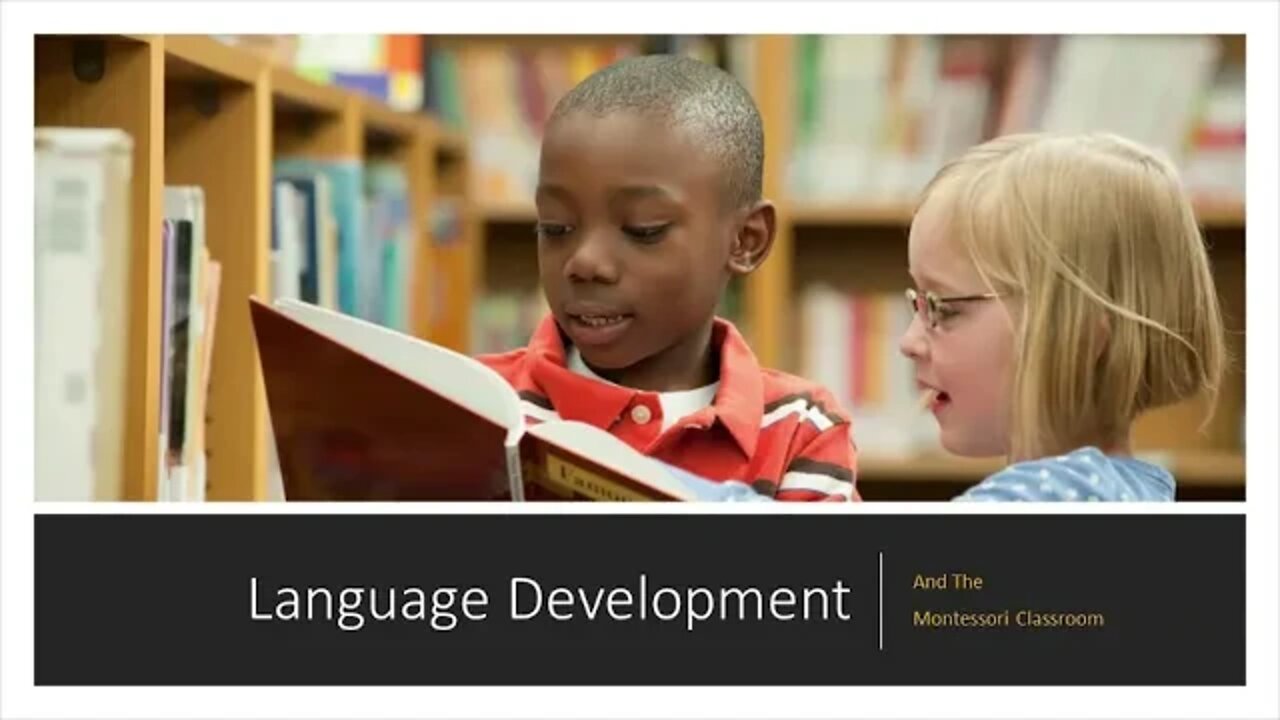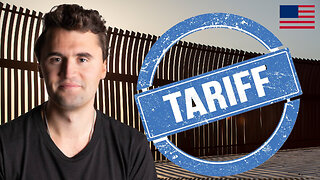Premium Only Content

The Development of Language Series (Part 1/4): How Language Develops
Timecodes:
0:00 Intro (Content and Source Info)
3:32 The Importance of Theory/Centers involved for the Acquisition of Language
6:07 Two Stages of Development
7:49 Timeline of Development
19:53 Language in the Children's House (Montessori ages 3-6)
34:56 Basic Language Materials Used in the Children's House
43:47 Language in the Math, Sensorial, and Practical Life Areas
Website Sources:
http://dyslexiahelp.umich.edu/professionals/dyslexia-school/phonological-awareness
http://www.defeat-dyslexia.com/2016/04/a-quick-guide-to-dyslexia-and-working-memory/
https://dyslexiaida.org/working-memory-the-engine-for-learning/
https://ortongillinghamonlinetutor.com/rapid-automatized-naming-and-fluency/
https://ortongillinghamonlinetutor.com/the-big-five-teaching-syllable-types/
Montessori Sources:
Lillard, Paul Polk. (1972). Montessori a modern approach: the classic introduction to Montessori for parents and teachers. New York, NY: Schocken Books Inc.
Montessori, Maria. (Vol 1). (2007). The absorbent mind. Amsterdam, The Netherlands: Montessori-Pierson Publishing Company.
Montessori, Maria. (Vol 2). (2017). The discovery of the child. Amsterdam, The Netherlands: Montessori-Pierson Publishing Company
Standing, E.M. (1957) Maria Montessori: her life and work. New York, NY: Penguin Group.
Montessori Institute of San Diego
Academic Sources (paywall)
Bratsch-Hines, M., Vernon-Feagans, L., Pedonti, S., & Varghese, C. (2019). Differential effects of the targeted reading intervention for students with low phonological awareness and/or vocabulary. Learning Disability Quarterly, 43(4), 214–226. https://doi.org/10.1177/0731948719858683
Catts, H. W., McIlraith, A., Bridges, M. S., & Nielsen, D. C. (2016). Viewing a phonological deficit within a multifactorial model of dyslexia. Reading and Writing, 30(3), 613–629. https://doi.org/10.1007/s11145-016-9692-2
Crosby, S. A., Rasinski, T., Padak, N., & Yildirim, K. (2014). A 3-year study of a school-based parental involvement program in early literacy. The Journal of Educational Research, 108(2), 165–172. https://doi.org/10.1080/00220671.2013.867472
Infurna, C. J., & Montes, G. (2020). Two years vs. one: The relationship between dosage of programming and kindergarten readiness. International Electronic Journal of Elementary Education, 13(2), 255–261. https://doi.org/10.26822/iejee.2021.188
Oslund, E. L., Simmons, D. C., Hagan-Burke, S., Kwok, O. M., Simmons, L. E., Taylor, A. B., & Coyne, M. D. (2014). Can curriculum-embedded measures predict the later reading achievement of kindergarteners at risk of reading disability? Learning Disability Quarterly, 38(1), 3–14. https://doi.org/10.1177/0731948714524752
Segal, A., & Martin-Chang, S. (2018). The apple doesn’t fall from the tree: parents’ readingrelated knowledge and children’s reading outcomes. Reading and Writing, 31(5), 1231–1247. https://doi.org/10.1007/s11145-018-9837-6
Vellutino, F. R., Scanlon, D. M., Zhang, H., & Schatschneider, C. (2007). Using response to kindergarten and first grade intervention to identify children at-risk for long-term reading difficulties. Reading and Writing, 21(4), 437–480. https://doi.org/10.1007/s11145-007-9098-2
Zuk, J., Dunstan, J., Norton, E., Yu, X., Ozernov‐Palchik, O., Wang, Y., Hogan, T. P., Gabrieli, J. D. E., & Gaab, N. (2019). Multifactorial pathways facilitate resilience among kindergarteners at risk for dyslexia: A longitudinal behavioral and neuroimaging study. Developmental Science, 24(1). 1-18. https://doi.org/10.1111/desc.12983
Locals Community:
https://montessoriforeveryone.locals.com/
You can find my channel on YouTube AND Rumble
Email Me:
Base10Montessori@gmail.com
-
 1:50:13
1:50:13
vivafrei
3 hours agoInterview with Rumble CEO Chris Pavlovski - Rumble & Bitcoin? Shocking Stats From Florida & MORE!
65.4K7 -
 59:02
59:02
Russell Brand
3 hours agoIs Free Speech Under Threat? Australia’s U16 Social Media Ban, & Maddow vs Jay Bhattacharya – SF501
98.4K156 -
 LIVE
LIVE
The New American
1 hour agoIncoming Border Czar Tom Homan Threatens Dem Leaders With Loss of Federal Money | New American Daily
749 watching -
 LIVE
LIVE
GameLeap RAID Shadow Legends
1 hour ago $0.78 earnedSOULSTONE PULLS, Building He-Man, F2P Account Update! - Raid Shadow Legends
292 watching -
 1:57:44
1:57:44
The Charlie Kirk Show
2 hours agoTrump's Tariff Brilliance + Crushing Lawfare Forever | Sen. Moreno, Habba, O'Keefe | 11.26.24
109K35 -
 44:35
44:35
TheAlecLaceShow
2 hours agoTrump Threatens Tariffs on Mexico & Canada | Jack Smith Drops Charges | WW3 | The Alec Lace Show
24.7K4 -
 6:57
6:57
Rethinking the Dollar
17 hours agoCommodities Boom Incoming: Why Gold and Silver Are Leading the Charge
15.4K3 -
 4:15:07
4:15:07
Sgtfinesse
3 hours agoSarge's 1st Stream on Rumble
32.1K1 -
 58:23
58:23
The Dan Bongino Show
5 hours agoDemocrats Enter Full Panic Mode (Ep. 2378) - 11/26/2024
667K1.64K -
 58:04
58:04
The Rubin Report
4 hours agoCNN Host Gets Visibly Angry as Her Trap for Conservative Backfires in Her Face
62.2K63